Best Air-Purifying Plants to Reduce Stress at Home
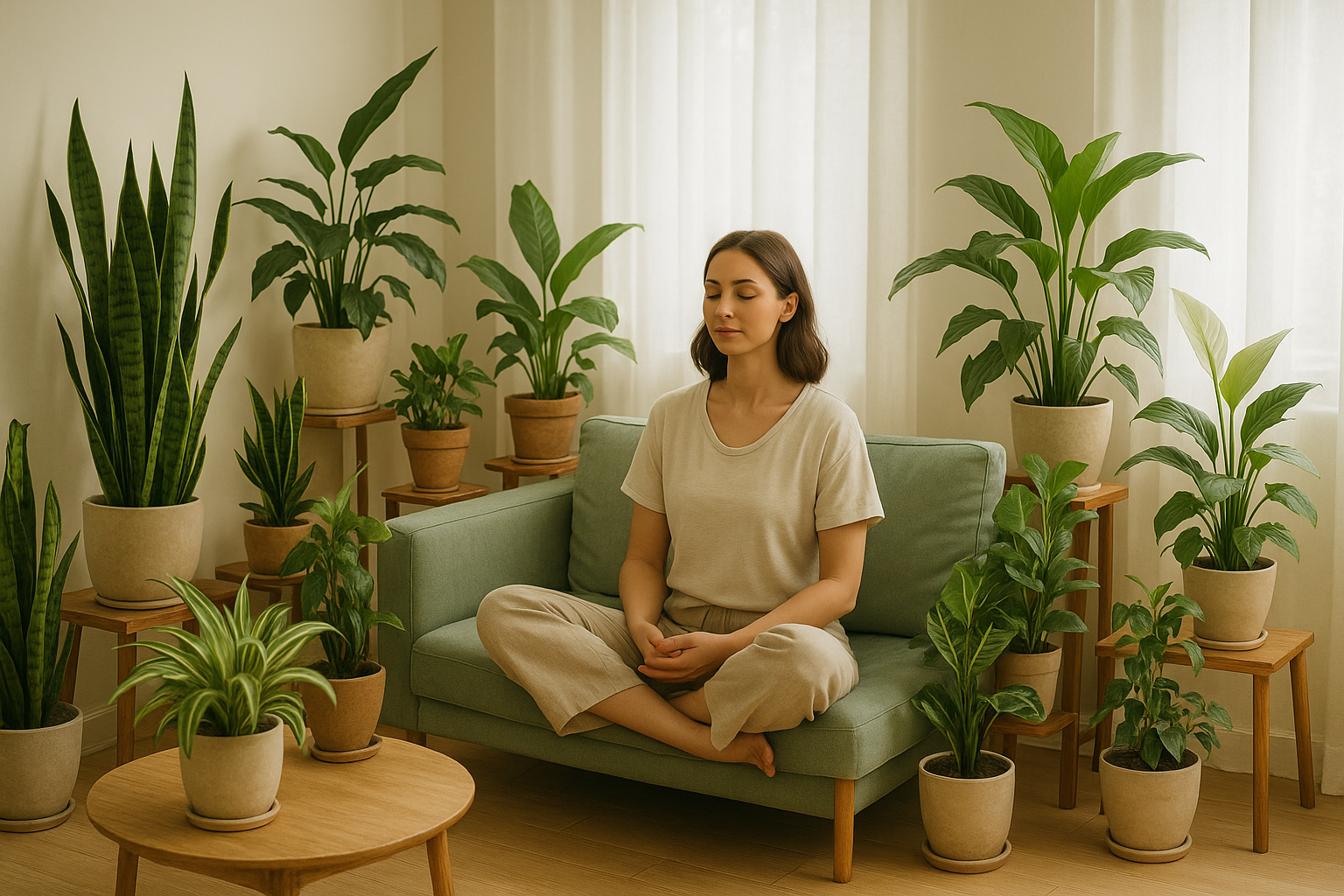
In today’s fast-paced world, our homes should function as sanctuaries that support both physical and emotional wellbeing. As explored in our guide to creating a health-boosting home environment, the quality of your indoor air significantly impacts your overall health. But certain plants offer a unique dual benefit: they not only filter toxins from your air but also have been scientifically proven to reduce stress and anxiety levels. Research shows that simply being around plants can lower cortisol levels, decrease blood pressure, and improve mood. By strategically selecting and placing specific air-purifying plants throughout your home, you can create spaces that simultaneously clean your air and calm your mind—addressing two crucial components of a truly healthy home environment.
What You’ll Learn About Stress-Reducing Air-Purifying Plants
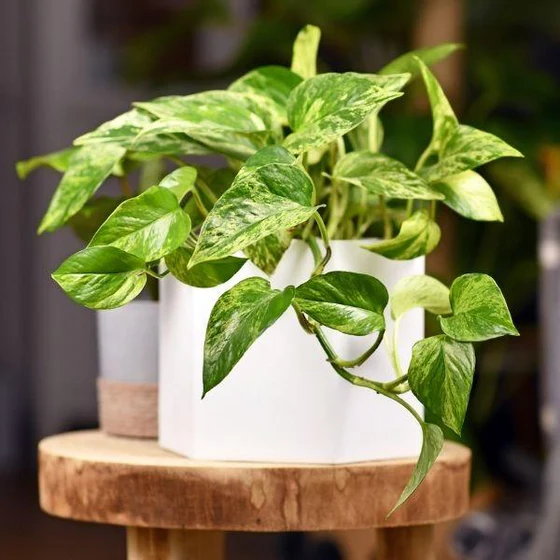
- 🌿 Top 5 plants that offer the strongest combination of air purification and stress reduction
- 🏡 Optimal placement strategies for maximum air-cleaning and stress-relieving benefits
- 💧 Easy care techniques even for those without a “green thumb”
- 🧠 The science behind how plants affect stress levels and air quality
- 🌱 How to build a complete plant wellness system throughout your home
This article complements our main guide on How to Turn Your Home into a Health-Boosting Space by focusing specifically on plant selection for both air quality and stress reduction.
ALT TEXT: Various air-purifying houseplants including snake plant, peace lily, and pothos arranged in a bright living room creating a calm, stress-reducing atmosphere
The Science Behind Plant Power
The connection between plants and wellbeing isn’t just subjective—it’s backed by substantial scientific research. A landmark study published in the Journal of Physiological Anthropology found that interacting with indoor plants can reduce both physiological and psychological stress. Participants who worked with plants showed reduced blood pressure, lower heart rates, and decreased cortisol levels compared to those performing computer tasks.
When it comes to air purification, NASA’s Clean Air Study remains the gold standard research demonstrating plants’ ability to remove volatile organic compounds (VOCs) from indoor environments. They found that certain plants can remove up to 87% of air toxins within 24 hours. When you combine these air-purifying properties with stress-reduction benefits, you get powerful allies for your health-boosting home.
The biophilia hypothesis, proposed by E.O. Wilson, suggests that humans have an innate connection to nature and living things. This explains why even brief exposure to plants can trigger positive psychological responses—a valuable counter to the estimated 70% of adults who report experiencing stress daily according to the American Institute of Stress.
ALT TEXT: Detailed diagram of a peace lily showing how its leaves and roots filter common household toxins like formaldehyde and benzene from indoor air
Top 5 Plants for Air Purification and Stress Reduction
Not all houseplants are created equal when it comes to the dual benefits of air cleaning and stress reduction. These five varieties consistently rank highest in scientific studies for their combined effectiveness.
1. Peace Lily (Spathiphyllum)
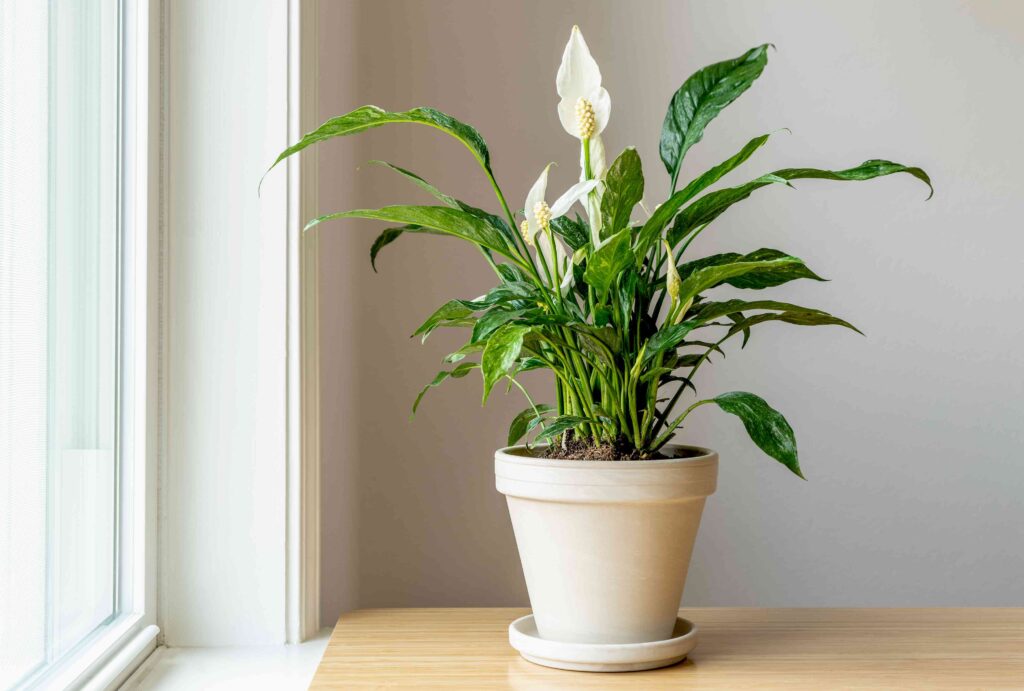
Peace lilies excel at removing common household toxins including formaldehyde, benzene, trichloroethylene, and ammonia. Their elegant white blooms have also been shown to reduce anxiety levels in study participants.
Care requirements:
- Light: Thrives in low to medium indirect light
- Water: Keep soil lightly moist, but not soggy
- Special needs: Occasional wiping of leaves to remove dust
PRO TIP: Place a peace lily in your bedroom to take advantage of its oxygen production at night, which may help improve sleep quality—another crucial factor in stress management and overall home health as discussed in our natural light article.
2. Snake Plant (Sansevieria)
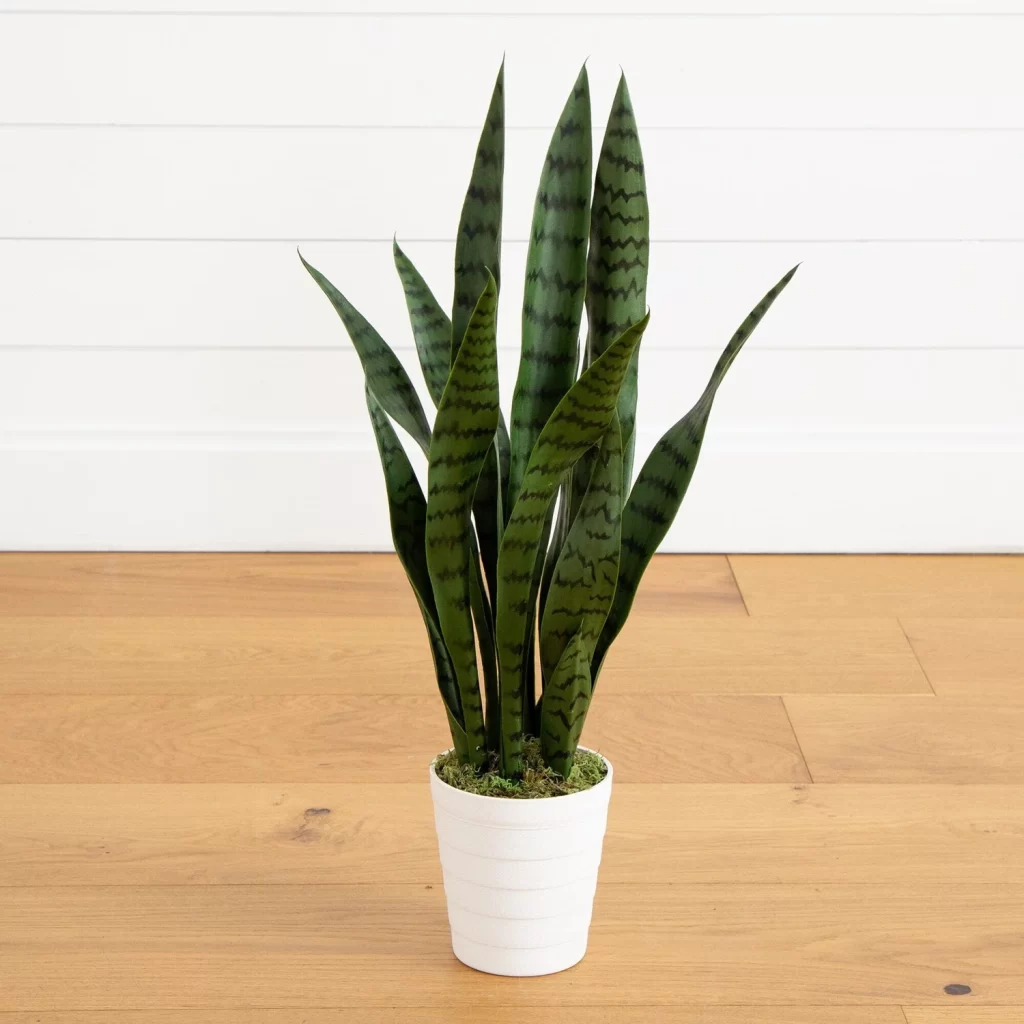
Also known as mother-in-law’s tongue, this striking plant is exceptionally effective at filtering formaldehyde, which is common in household products and furnishings. Unlike most plants, snake plants release oxygen at night, making them ideal bedroom companions.
Care requirements:
- Light: Adaptable to almost any light conditions
- Water: Allow soil to dry completely between waterings
- Special needs: None—extremely tolerant of neglect
3. Boston Fern (Nephrolepis exaltata)
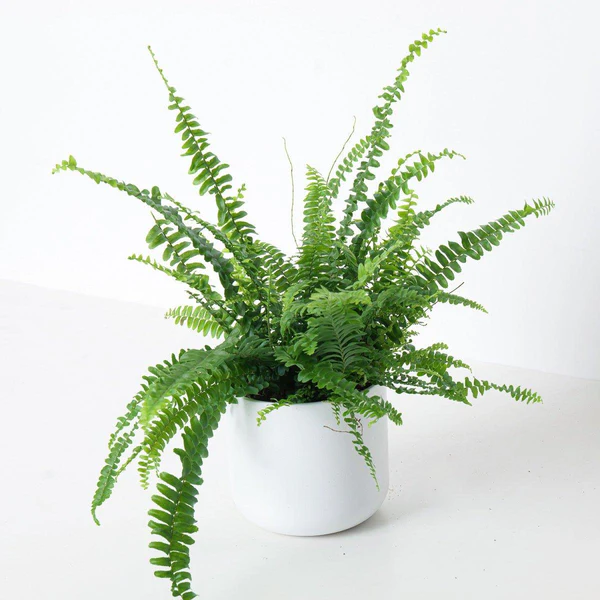
Boston ferns are humidifying powerhouses that also excel at removing formaldehyde. Their lush, feathery fronds create a visually soothing presence that has been shown to lower blood pressure and heart rate in clinical settings.
Care requirements:
- Light: Bright, indirect light
- Water: Keep soil consistently moist
- Special needs: Regular misting to maintain humidity
4. Rubber Plant (Ficus elastica)
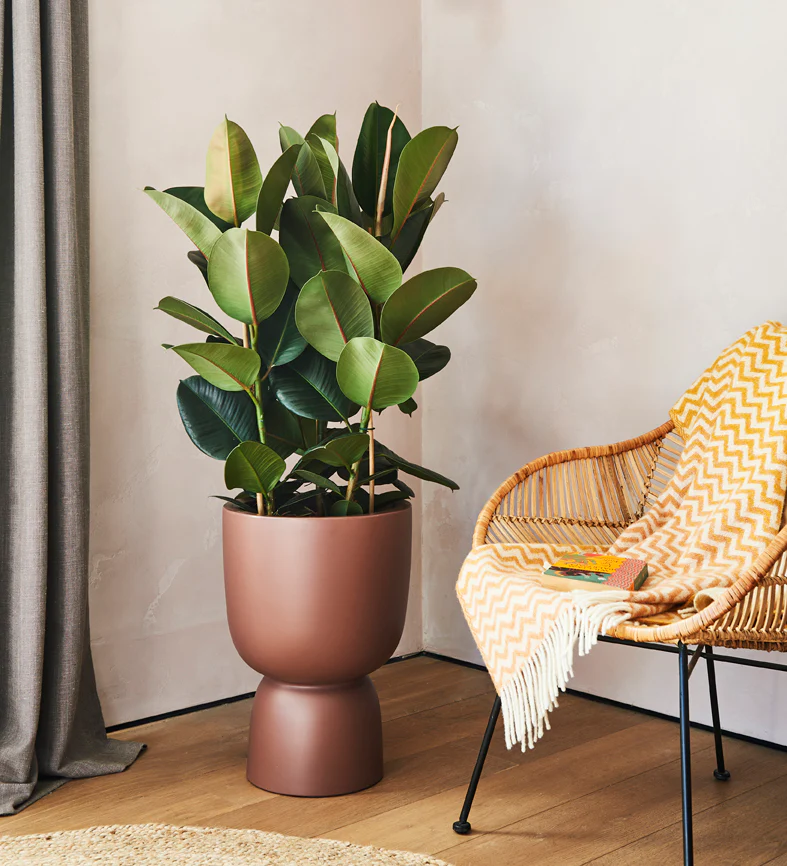
These glossy-leaved plants efficiently remove air toxins while requiring minimal care. Their substantial presence makes them excellent statement pieces that create a forest-like atmosphere linked to stress reduction.
Care requirements:
- Light: Bright, indirect light
- Water: Allow top inch of soil to dry between waterings
- Special needs: Occasional leaf cleaning with damp cloth
5. Areca Palm (Dypsis lutescens)
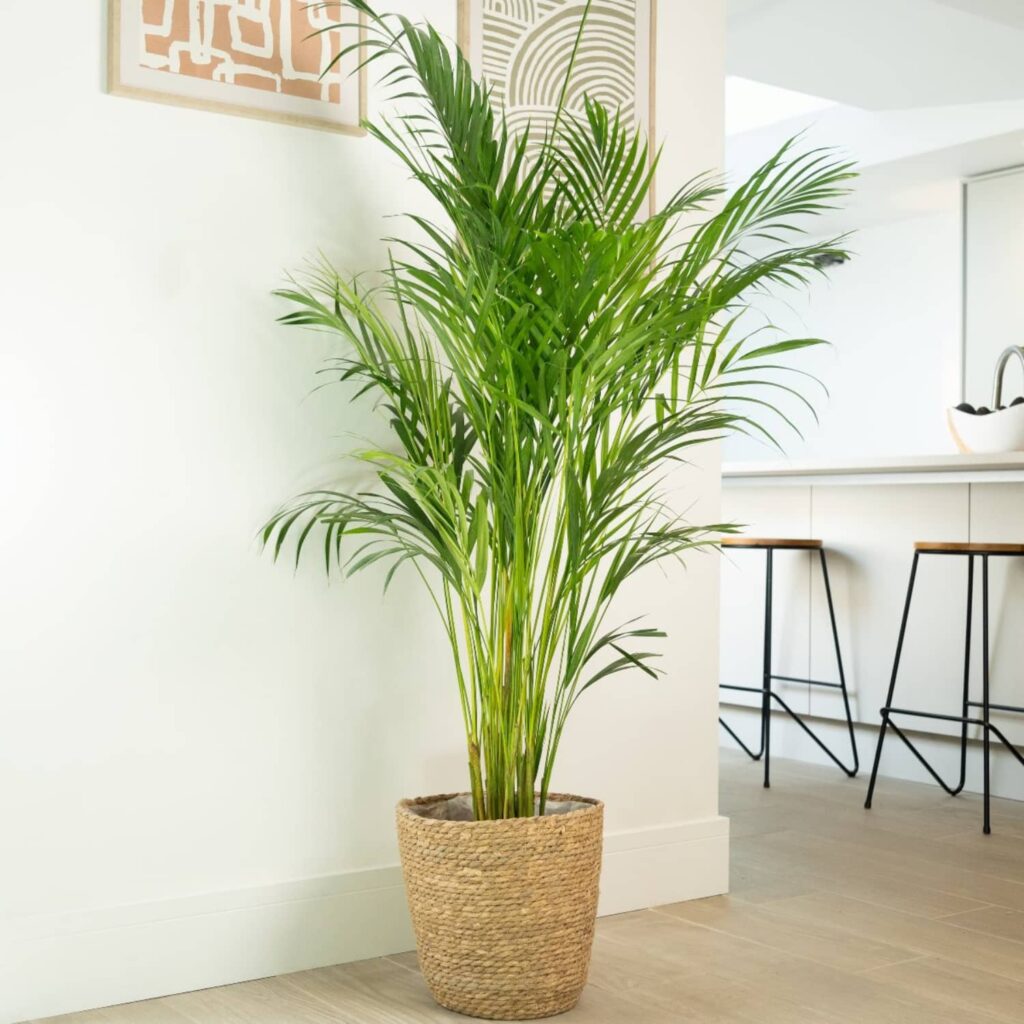
This elegant palm effectively filters xylene and toluene from the air while adding a tropical, vacation-like feel to any space. Studies show that viewing palms specifically can trigger positive associations that reduce anxiety.
Care requirements:
- Light: Bright, indirect light
- Water: Keep soil lightly moist
- Special needs: Occasional fertilizing during growing season
ALT TEXT: Floor plan diagram showing strategic plant placement throughout a home with specific plants marked for bedrooms, living areas, and high-pollution zones like kitchens
Strategic Placement for Maximum Benefits
Where you position your plants significantly impacts both their air-purifying effectiveness and their stress-reducing potential. Consider these placement strategies that complement the ventilation principles in our health home series:
High-Impact Zones for Air Purification
- Kitchen: Place plants that excel at filtering cooking-related pollutants (spider plants, English ivy) in or near the kitchen
- Home office: Position plants within your line of sight while working to benefit from stress reduction (rubber plant, peace lily)
- Bathroom: Select humidity-loving plants that combat mold spores (Boston fern, snake plant)
- Bedroom: Choose oxygen-producing nighttime plants near your bed (snake plant, aloe vera)
- Living room: Create grouped arrangements for maximum visual impact and air cleaning (areca palm, peace lily, pothos)
Aim for at least one medium-sized plant (or two smaller plants) per 100 square feet of space to achieve noticeable air purification benefits.
The simple act of placing plants where you can see them throughout the day creates multiple “micro-dose” opportunities for stress reduction—a concept supported by studies showing even brief nature exposure can lower stress hormones.
ALT TEXT: Person demonstrating proper watering, pruning, and maintenance techniques for various air-purifying houseplants in a well-lit home setting
Simple Care Routines for Plant Success
Many people hesitate to bring plants home fearing they’ll quickly kill them. However, establishing simple care routines can ensure success even for beginners.
Essential Care Guidelines for Air-Purifying Plants
- Establish a watering schedule: Most stress-reducing air purifiers prefer consistent moisture levels. Set calendar reminders for weekly plant check-ups.
- Understand light requirements: Monitor how light moves through your home during the day and position plants accordingly. Move them seasonally as needed.
- Support air purification: Gently wipe dust from large-leafed plants monthly to maintain their air-filtering effectiveness.
- Group plants strategically: Create humidity-sharing micro-environments by clustering plants with similar needs.
- Watch for signs of trouble: Yellowing leaves often indicate overwatering, while brown tips suggest underwatering or low humidity.
Sarah Jensen, a plant therapist who uses horticultural approaches for anxiety management, shares: “I’ve seen remarkable changes in clients who establish even simple plant care routines. The combination of improved air quality, visual connection to nature, and the mindful routine of plant care creates meaningful stress reduction.”
For additional guidance on incorporating plants within your broader efforts to create a health-promoting home environment, consider how these green additions complement strategies like natural lighting and organization for anxiety reduction.
ALT TEXT: Split image showing same person in plant-filled home looking calm versus in plant-free environment showing visible signs of stress and tension
Addressing Common Plant Challenges
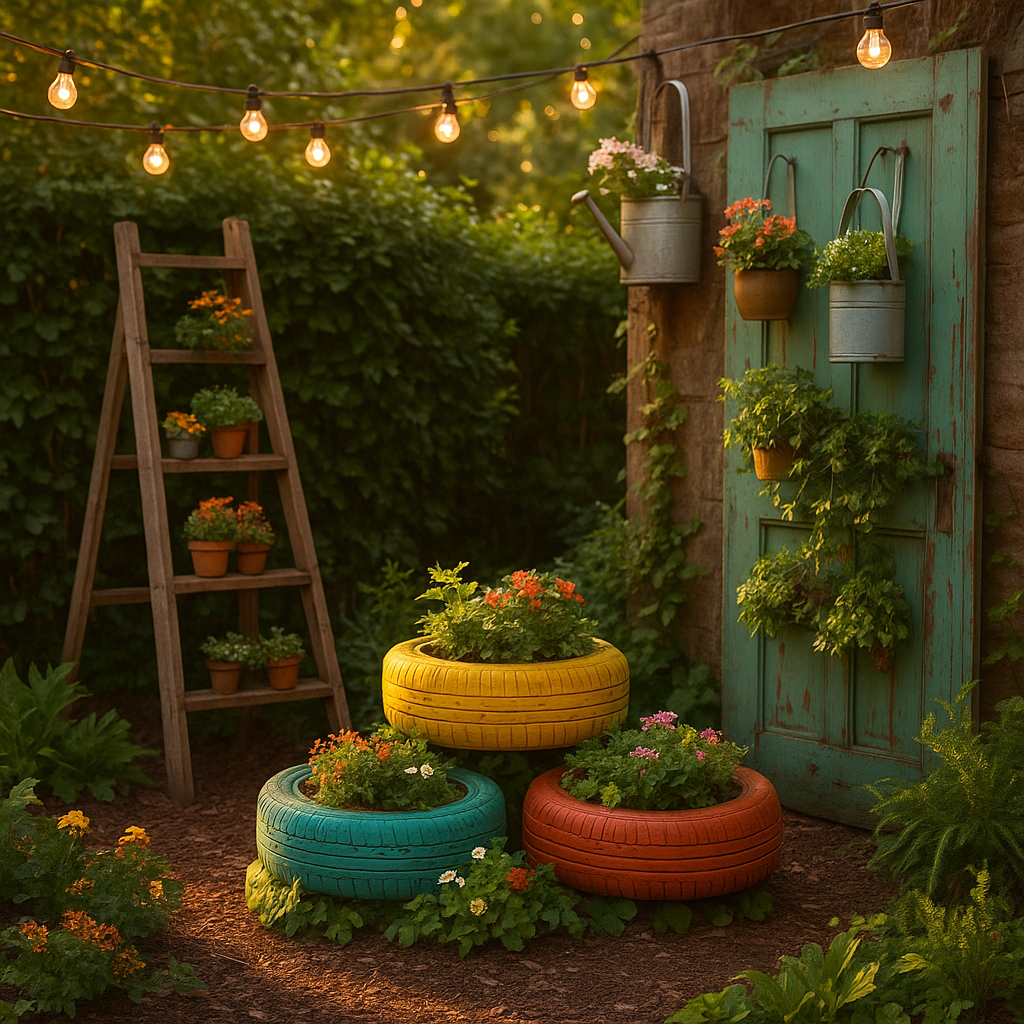
Even with the best intentions, plant parents sometimes encounter obstacles. Here are solutions to the most common challenges:
Solutions for Limited Light
If your home lacks natural light—a situation that can also impact your own wellbeing as detailed in our natural light article—consider these adaptations:
- Rotate low-light tolerant plants (snake plants, ZZ plants, pothos) through brighter areas weekly
- Supplement with inexpensive grow lights during darker months
- Use reflective surfaces to maximize existing light
- Choose plants with variegated leaves which typically need less light
Strategies for Busy Schedules
- Install self-watering systems or water-wicking setups
- Select drought-tolerant varieties (snake plants, ZZ plants, succulents)
- Group plants to create humidity-sharing communities
- Use moisture meters to prevent over/under watering
ATTENTION: When traveling, place plants in bathtubs with a small amount of water at the bottom and a towel with one end in the water and the other reaching the plant pots. This creates a simple wicking system that can sustain most plants for 1-2 weeks.
If allergies are a concern, focus on plants with smooth, glossy leaves that collect less dust and pollen. Regularly wiping leaves not only improves their air-filtering capacity but also reduces potential allergens.
ALT TEXT: Visual guide showing various air-purifying plants organized by maintenance difficulty, air purification efficiency, and stress reduction benefits
Creating Your Plant Wellness Plan
To fully harness both the air-purifying and stress-reducing benefits of plants, consider implementing this three-phase approach:
- Start small: Begin with 1-2 extremely hardy plants (snake plant, pothos) to build confidence before expanding.
- Diversify strategically: Once comfortable, add plants that complement each other in terms of care needs and purification specialties.
- Create plant stations: Develop specific groupings throughout your home targeting different aspects of wellbeing (sleep support, focus enhancement, general stress reduction).
Remember that plant care itself functions as a mindfulness practice. The routine of checking soil, removing dead leaves, and observing growth provides opportunities to disconnect from digital devices and engage with the natural world—a practice increasingly recognized for its stress-reduction benefits.
As you incorporate these air-purifying, stress-reducing plants into your home, you’re addressing two key aspects of creating a health-boosting space: physical air quality and emotional wellbeing. This plant-based approach works especially well when combined with other natural strategies like cross ventilation and home organization.
Frequently Asked Questions
🌱 Can plants really make a measurable difference in indoor air quality?
Yes, research demonstrates that plants can reduce certain indoor air pollutants by 30-80% depending on the specific plant and toxin. However, for heavily polluted environments, plants work best as one component of a comprehensive approach that might also include the strategies found in our natural air quality improvement guide.
🧠 How quickly can plants affect stress levels?
Studies show that some physiological stress markers like blood pressure can decrease after just 5-10 minutes of plant interaction. For ongoing benefits, daily exposure through strategically placed plants throughout your home is ideal.
💧 What if I chronically overwater or underwater plants?
Consider moisture-monitoring tools like water meters or self-watering pots. Snake plants, ZZ plants, and pothos are particularly forgiving for those still developing their plant care skills.
🐱 Are these plants safe for pets?
Several recommended plants including peace lilies can be toxic to cats and dogs if ingested. Pet-safe alternatives with good air-purifying properties include Boston ferns, spider plants, and certain palms. Always research plant toxicity before bringing new plants home with pets.
Additional Resources
Continue Your Health Home Journey
- How to Turn Your Home into a Health-Boosting Space – Our comprehensive guide to creating a home that supports total wellbeing
- 5 Natural Ways to Improve Indoor Air Quality – Additional strategies to complement your air-purifying plants
- How Natural Light Affects Your Mental Health – Optimize light exposure for better mood and sleep
- What Is Cross Ventilation and Why It Matters for Your Health – Natural airflow strategies to enhance plant benefits
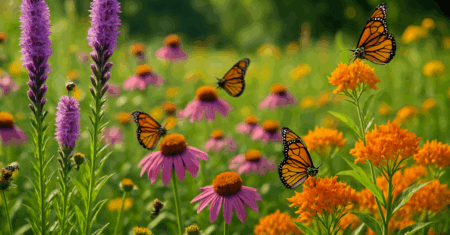


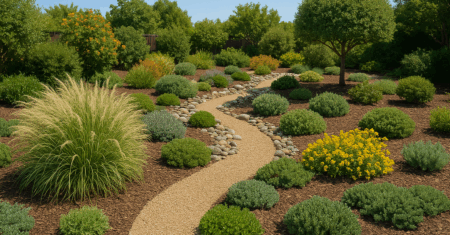
0 Comments